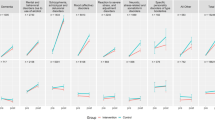Summary
The admissions of patients living in Linz, Upper Austria, to psychiatric inpatient treatment were assessed over a period of 10 years (2000-2009). Admission numbers rose by 15 %, yet already in 2000 the degree of utilization of beds was 99 %. Therefore it was necessary to treat patients seeking admission as outpatients, increasing their numbers from 216 in the year 2001 to 1506 in the year 2009. The number of patients admitted for the first time increased marginally. Concerning diagnoses a huge increase of patients with affective disorders (F3: +136 %) was found, which was mainly due to patients with depressive disorders whilst manic episodes even marginally decreased. No change was found in the diagnostic categories F2 and F4–F6. The number of patients with substancerelated disorders decreased markedly (-23 %). Over the whole period the proportion of males decreased from 54.8 % in 2000 to 47.4 % in 2009. The increase of admissions of patients with affective disorders corresponds with a decrease of admissions to other, non-psychiatric hospitals in Linz.
Zusammenfassung
Die Aufnahmen von Patienten aus der Stadt Linz in der OÖ LNK Wagner-Jauregg wurden über einen Zeitraum von 10 Jahren (2000–2009) untersucht. Dabei zeigtesich eine Zunahme der Aufnahmen um 15 %, allerdings betrug die Auslastung bereits am Beginn des Untersuchungszeitraumes 99 %. Entsprechend der beschränkten Aufnahmekapazitätkam es zu einer starken Zunahme ambulanter Kontakte, um Patienten mit Aufnahmewunsch ambulant zubehandeln (2001: 216 Kontakte; 2009: 1509 Kontakte). Die Zahl der Erstaufnahmen erhöhte sich nur geringfügig. Bei der Aufschlüsselung nach Diagnosen fand sich eine sehr ausgeprägte Zunahme der Aufnahmen von Patienten mit affektiven Störungen (F3: +136 %), was vorwiegend auf Patienten mit depressiven Episoden zurückzuführen war, während die Anzahl von Patienten mit manischen Episoden gering abnahm. Aufnahmen von Patienten mit Störungen durch psychotrope Substanzen gingen deutlich zurück (-23 %). Keine wesentlichen Veränderungen fanden sich in den Diagnosegruppen F2 und F4 – F6. Der Anteil von Männern unter den behandelten Patienten betrug im Jahr 2000 54,8 % und sank bis zum Jahr 2009 auf 47,4 % ab. Ein Teil der Mehraufnahmen von Patientenmit depressiven Störungen lässt sich damit erklären, dass weniger Patienten dieser Diagnosen in anderen, nicht-psychiatrischen Abteilungen Linzer Spitäler behandelt wordensind.
Similar content being viewed by others
Literatur
Rittmannsberger H.: Überbelag - eine Bestandsaufnahme. Gemeindenahe Psychiatrie 30, 187–197 (2009)
Katschnig H, Denk P, Scherer M.: Österreichischer Psychiatriebericht 2004. Bundesministerium für Gesundheit und Frauen, Wien (2004)
Bland RC.: Epidemiology of affective disorders: a review. Can J Psychiatry 42, 367–377 (1997)
Joyce PR, Oakley-Browne MA, Wells JE. et al.: Birth cohort trends in major depression: increasing rates and earlier onset in New Zealand. J Affect Disord 18, 83–89 (1990)
Klerman GL, Weissman MM.: Increasing rates of depression. JAMA 261, 2229–2235 (1989)
Klerman GL.: The current age of youthful melancholia. Evidence for increase in depression among adolescents and young adults. Br J Psychiatry 152, 4–14 (1988)
Olfson M, Shea S, Feder A. et al.: Prevalence of anxiety, depression, and substance use disorders in an urban general medicine practice. Arch Fam Med 9, 876–883 (2000)
Jäger M, Haack S, Becker T, Frasch K.: Schizoaffective disorder-an ongoing challenge for psychiatric nosology. Eur Psychiatry 26, 159–165 (2011)
Malhi GS, Green M, Fagiolini A et al.: Schizoaffective disorder: diagnostic issues and future recommendations. Bipolar Disord 10(1p2), 215–230 (2008)
Lake CR, Hurwitz N.: Schizoaffective disorder merges schizophrenia and bipolar disorders as one disease - there is no schizoaffective disorder. Curr Opin Psychiatry 20, 365–379 (2007)
Vollmer-Larsen A, Jacobsen TB, Hemmingsen R. et al.: Schizoaffective disorder – the reliability of its clinical diagnostic use. Acta Psychiatr Scand 113, 402–407 (2006)
Mors O.: Increasing incidence of borderline states in Denmark from 1970-1985. Acta Psychiatr Scand 77, 575–583 (1988)
Author information
Authors and Affiliations
Corresponding author
Additional information
Eingelangt am 1. Juli 2011, angenommen am 9. August 2011
Admissions to psychiatric inpatient treatment over a 10 year period (2000-2009)
Rights and permissions
About this article
Cite this article
Rittmannsberger, H., Sulzbacher, A. Entwicklung stationärer psychiatrischer Aufnahmen über 10 Jahre (2000–2009). psychiatr. psychother. 7, 79–83 (2011). https://doi.org/10.1007/s11326-011-0162-9
Published:
Issue Date:
DOI: https://doi.org/10.1007/s11326-011-0162-9




